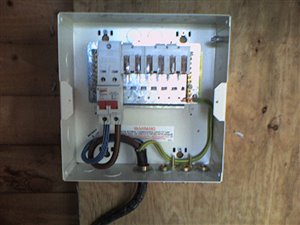
istead of expected single 25mm
davezawadi (David Stone):
Another example. Now discuss if this is permitted because I won't.
You have already discussed it and the answer isn’t clear cut.
https://communities.theiet.org/discussions/viewtopic/1037/25616
I asked where the meter is with the intention of trying to determine if the cable should be classified as suppliers equipment or part of the consumers installation, the next question is what fuses are installed to protect this cable, is protected by the suppliers fuse or a fuse within the consumers installation?
We're about to take you to the IET registration website. Don't worry though, you'll be sent straight back to the community after completing the registration.
Continue to the IET registration site